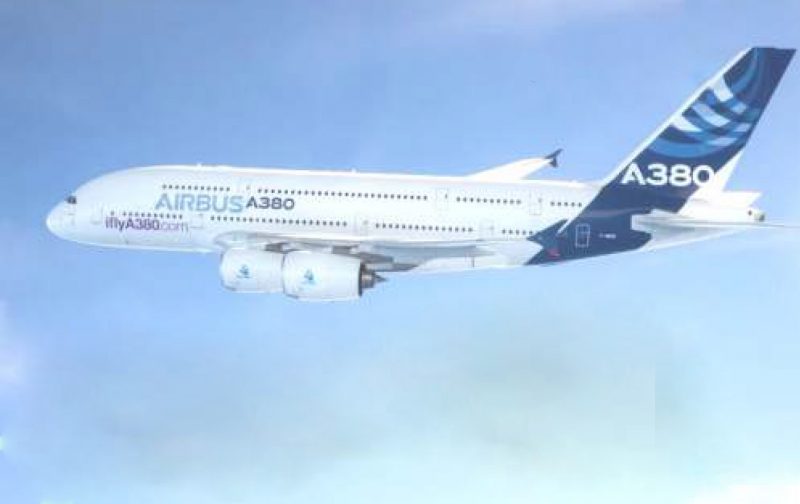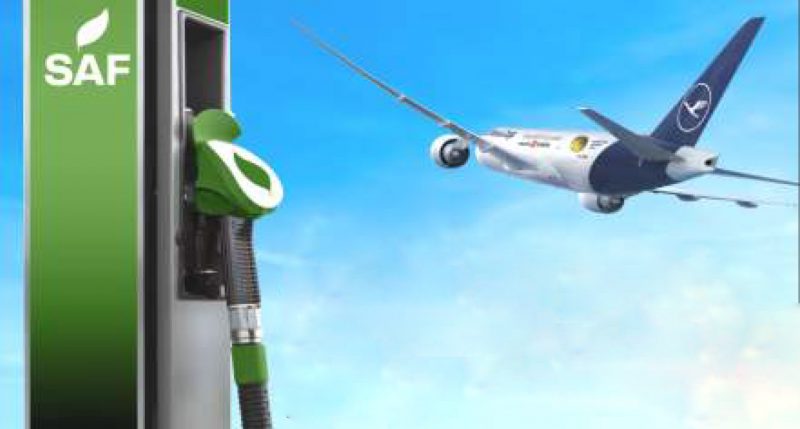Net Zero by 2050, is it achievable?
Aviation contributes about 4% to human-induced global warming as jet fuel burn produces CO2, nitrogen oxide, soot, water vapor and sulfate aerosols. The industry’s progress in cuing emissions
to date is disappointing but by 2050, the use of Sustainable Aviation Fuel or SAF will rise from only about 100 million liters in 2021 to at least 449 billion liters a year.
The question on everyone’s mind in the aviation industry is this: Is the goal of Net Zero carbon emissions by 2050
achievable? Going by the intent, the answer is ‘Yes’. But the ground reality is that ‘the sector needs to massively step-up efforts on SAF’.
Scientists have been sounding the alarm bells that climate change is still the greatest threat to human health in recorded history. The Secretary General of United Nations Antonio Guterres has said climate change is a ‘crisis multiplier’ that has profound implications for international peace and stability.
Various research reports indicate that aviation contributes around 4% to humaninduced global warming as jet fuel burn produces CO2, nitrogen oxide, soot, water vapor and sulfate aerosols, all of which interact with the atmosphere and impact climate.
The aviation sector is aiming to reach netzero emissions by 2050, relying on SAF usage to rise from around 100 million liters (26 million gallons) a year in 2021 to at least 449 billion liters a year by 2050, a humongous challenge.
Aviation has to get its act right
Indeed, it is going to require huge efforts from all stakeholders. As per reports, the aviation sector’s progress in cutting emissions has been disappointing to date. For example, in February 2021, research on the world’s largest 58 airlines found even the best-performing ones were not doing enough to cut emissions.
At last year’s COP26 (Conference of Parties comprising 197 countries) climate change summit in Glasgow, the industry merely reasserted a commitment to a plan known as the Carbon Offsetting and Reduction Scheme for International Aviation. The scheme relies on carbon offsetting, which essentially pays another actor to reduce emissions on its behalf at lowest cost, and doesn’t lead to absolute emissions reduction in aviation. It also encourages alternative cleaner fuels, but the level of emissions reduction between fuels varies considerably.
Achieving fossil-free flights requires replacing jet fuel with alternatives such as sustainable fuels or electric and hydrogen propulsion and that has to happen in double quick time. Governments, airlines, airports, OEMs and other stakeholders have to do more to achieve ‘net zero’ emissions. Curtailing emissions need a bouquet of solutions.
With passenger and cargo numbers going to explode and the number of airplanes that are going to be up in the sky, a lot more needs to be done in terms of fuel alternatives. The International Air Transport Association (IATA) expects overall traveler numbers to reach 4.0 billion in 2024 (counting multisector connecting trips as one passenger), exceeding pre-COVID-19 levels (103% of the 2019 total).
Airbus said that SAF is a carbon-reduction solution that is available for use in aircra and helicopters operating today. It is a “drop-in” fuel because it can be blended up to 50% with conventional jet fuel without any engine modification required.
7.4 billion parcels by air every year
On the freight side, IATA reported that 328 billion letters and 7.4 billion postal parcels are sent every year and airmail plays an essential role in their delivery. While the emergence of electronic communications caused a dramatic decrease in the number of letters sent, more and more parcels are delivered daily thanks to e-commerce and this is going to increase exponentially. So will aircraft numbers increase.
Boeing has forecast that a combination of 4.0% annual average traffic growth, measured in ton-kilometers, and a proven need for dedicated freighter capacity means the freighter fleet will grow by more than 60% over the next two decades.
By 2039, 2,430 freighters are forecast to be delivered, with approximately half replacing retiring airplanes and the remainder needed to meet projected traffic growth. More than one-third of these deliveries will be new wide-body cargo airplanes; nearly two-thirds of the deliveries will be conversions from passenger airplanes. This will be in addition to the passenger planes that will be in the sky carrying freight in the belly-hold.
In such a scenario, the challenge indeed is humongous. The CEO of Etihad Airlines, Tony Douglas has said, “The biggest challenge to commercial aviation is the commitment that’s been made to net-zero carbon emissions by 2050.”
And the biggest stumbling block is the jet fuel which the aviation sector is highly dependent on and seemingly cannot do without it. Though aviation was becoming about 3% efficient each year, passenger demand was increasing at about 5%, thus the gap kept widening, requiring more planes up in the sky. It is only of late that we are hearing of SAF which are being tested and have had some successful flights.
Alternatives are expensive as of now
In a Guardian interview Dan Rutherford, Director of Aviation at the International Council on Clean Transportation (ICCT) has said that advanced waste biofuels are cheap and has good life-cycle emissions, but its supply is limited. “Using these fuels exclusively for aviation would provide for only about 2% of jet fuel use in the European
Union and the United States of America.” Rutherford raises hopes by mentioning ‘electrofuel’ (made using clean electricity and hydrogen) could have an ‘almost unlimited supply’ but can be very expensive to make, as of now.
Airbus, Boeing and others working hard towards the goal
The two big aerospace behemoths – Airbus and Boeing – have made commitments towards ‘net zero’, but whether it is achieved by 2050 is a million-dollar question. Airbus believes that SAF is one of the aerospace industry’s best decarbonization solutions that can be used in both in-service fleets and the flying fleets of tomorrow.
Airbus said that SAF is a carbon-reduction solution that is available for use in aircraft and helicopters operating today. It is a “drop-in” fuel because it can be blended up to 50% with conventional jet fuel without any engine modification required.
Similarly, Boeing in February this year bought two million gallons of blended sustainable aviation fuel from EPIC Fuels for its commercial aeroplanes’ operations in Washington state and South Carolina. The SAF purchase, which is claimed to be the largest by an airframer, is part of Boeing’s aviation decarbonization goal.
DHL in strategic collaboration for SAF
DHL Express, division for global courier, express, and parcel services, launched a strategic collaboration with bp and Neste to source over 800 million liters of SAF through 2026, expecting to save approximately two million tons of carbon dioxide emissions over the aviation fuel lifecycle. To put that into perspective: it equals the emissions of about 400,000 passenger vehicles. And with that amount, DHL can fuel approximately 1,000 flights per year between Cincinnati (USA) and Leipzig (Germany) for about 12 years! “There is no way around sustainable logistics in the future. We are deciding today what kind of world we and our children will live in 30 years from now,” said Frank Appel, DHL’s CEO.
Boeing Environmental Sustainability VicePresident Sheila Remes said, “SAF is a safe, proven, immediate solution that will help achieve our industry’s long-term commitment to net-zero carbon emissions by 2050.”
IATA has said that success will require the coordinated combined efforts of the entire industry (airlines, airports, air navigation service providers, manufacturers) and significant government support. The net-zero objective will be met through a combination of maximum elimination of emissions at source and the use of approved offsetting and carbon capture technologies.
While many in the aerospace industry are on course towards ‘net zero’ by 2050, the reality is that aviation presently makes up for about 4 % (about 900 billion tons of CO2 annually) of worldwide carbon emissions and this percentage is likely to go up with more and more people taking to the skies. And while efforts are on to reach the goal by 2050, we hope that the industry stays the course.
Air cargo carriers that are on course in reducing carbon footprint
Without exception, we believe, each segment of aviation is working towards reducing carbon footprint. However, there are a few global air cargo carriers who are leading from the front and seemingly on course to achieve net-zero emission by COP26’s deadline of 2050. These carriers include: FedEx; DHL; DB Schenker; Seka; Lufthansa Cargo; Kuehne+Nagel; Air France KLM; Martinair, among others. We have included two airlines from India – IndiGo and SpiceJet, which have taken steps in that direction.
Kuehne+Nagel joins Air France KLM Martinair Cargo SAF program
The program began with the launch of the first carbon neutral airfreight lane between North America and Europe on New Year’s Day. This initiative marks another step towards the commercial deployment of alternative fuel and the companies’ commitment to a sustainable future for aviation. The year-round transportation of all Kuehne+Nagel cargo on board daily Air France KLM flights from Los Angeles to Amsterdam will be fully covered by SAF.
This first carbon-neutral lane underlines the strong sustainability programs of both partners, Kuehne+Nagel’s Net Zero Carbon program and AFKLMP Cargo’s SAF program, which aim to connect people and goods through sustainable logistics. Yngve Ruud, member of the management board of Kuehne+Nagel, responsible for air
logistics, said: “The first zero emission route marks the beginning of our journey into CO₂ neutral air freight and is another step towards achieving complete carbon neutrality by 2030. At Kuehne+Nagel, we are ready to take leader ship and responsibility for the next generation of air transport and encourage our customers and industry colleagues to join us in making sustainable choices available.”
FedEx funds research on storing excess carbon
Global giant FedEx in its efforts to achieve carbon neutral operations by 2040 has pledged $100 million to help establish the Yale Center for Natural Carbon Capture, where researchers will focus on ways to remove and store Earth’s excess carbon; Convert its entire parcel pickup and delivery fleet to zero-emission electric vehicles; Build on its FedEx Fuel Sense initiatives to continue working to reduce aircraft fuel consumption; and Continue to invest in alternative fuels which could reduce aircraft and vehicle emissions. By 2030, it plans to get 30% of its jet fuel from
alternative fuels.
FedEx Chairman and CEO, Frederick W. Smith has said “We have a responsibility to take bold action in addressing climate challenges. This goal builds on our longstanding commitment to sustainability throughout our operations, while at the same time investing in long- term, transformational solutions for FedEx and our entire industry.”
Lufthansa Cargo operates 100% SAF-powered charter freight
Lufthansa Cargo is one of the pioneers in the use of SAF. Last year, over 1% of fuel used by cargo aircraft was SAF. It has the distinction of operating the world’s only regular full charter freight connection that is 100% SAF-powered. Together with its partner DB Schenker, Lufthansa Cargo saves around 174 tons of conventional kerosene per week.
In October 2021, Lufthansa Cargo became a pilot customer of the world’s first production plant for power-to-liquid fuels in Emsland in northwest Germany. Together with the operator, NGO atmosfair, it is promoting the ongoing development and market launch of industrially produced, CO2-neutral PtL fuel.
Be s ide s tha t, Lufthans a Ca rgo i s continuously investing in modernizing its fleet. Since October 2021, it has switched completely to the Boeing 777F – today’s most modern freighter with the best environmental performance. It has placed orders for its even more efficient successor, the B777-8F, which we will start flying in 2027.
Similarly, its AeroSHARK technology, a special coating reduces the frictional resistance of an aircraft by more than 1%. From 2022, this technology will be rolled out across its fleet of eleven B777F freighters, saving around 3,700 tons of kerosene or about 13,000 tons of CO2 emissions per year. Also, it has used lightweight containers on its flights, leading to weight reduction of 14 kg per container and fuel savings totaling 2,160 tons per year.
DB Schenker’s greener logistics
DB Schenker and Lufthansa Cargo have decided to continue their fossil-free freighter flights between Frankfurt (FRA) and Shanghai (PVG). The joint offer towards greener logistics will extend until at least October 2022. By utilizing sustainable aviation fuel (SAF) and additional upstream compensation, they will save another 21,000 tons of CO2e.
The duo has saved 31,000 tons of CO2e since starting their cooperation end of 2020. The weekly flight rotation continues to be the world’s only regular full charter fully covered by SAF. DB Schenker has also become an ac tive member of theSustainable Air Freight Alliance (SAFA), which strives to encourage freight forwarders to partner in an effort to track and mitigate CO2 emissions during freight transport.
SEKO Logistics joins SAFA
SEKO Logistics has joined the Sustainable Air Freight Alliance (SAFA) to accelerate its global decarbonization program and help clients achieve their own sustainabilitygoals. The Sustainable Air Freight Alliance (SAFA) is a buyer-supplier collaboration between shippers, freight forwarders and airlines to track and reduce carbon dioxide
emissions from air freight and promote responsible freight transport. “We have a responsibility to join other global business leaders in this initiative because our industry must do more to protect our planet for future generations,” said James Gagne, President & CEO of SEKO Logistics. “
In October 2021, Luhansa Cargo became a pilot customer of the world’s first production plant for power-toliquid fuels in Emsland in nohwest Germany
Indian carriers not behind
SpiceJet and GMR Group are panering with Boeing and French companies respectively to explore oppounities for
development and use of SAF. French companies Safran, Axens and Airbus have teamed up with GMR Group to examine the development of SAF demonstrator, based on agricultural products. Similarly, Boeing is panering with SpiceJet and CSIRIndian Institute of Petroleum. They will work together to leverage SAF supply from CSIR-IIP and its production paners and licensees to help the airline decarbonize its fleet. India’s first international SAF flight with Airbus A320neo was by IndiGo in February this year. Mr. Ronojoy Dua, Chief Executive Officer, IndiGo said, “We are pleased to take delivery of this Airbus aircra which will run on Sustainable Aviation Fuel, as pa of our journey towards sustainable aviation. At IndiGo, we recognize the impoance of adopting sustainability in aviation and this is another step towards a cleaner environment. We look forward to embracing more such initiatives to reduce impact on the environment in line with our ESG goals.”














